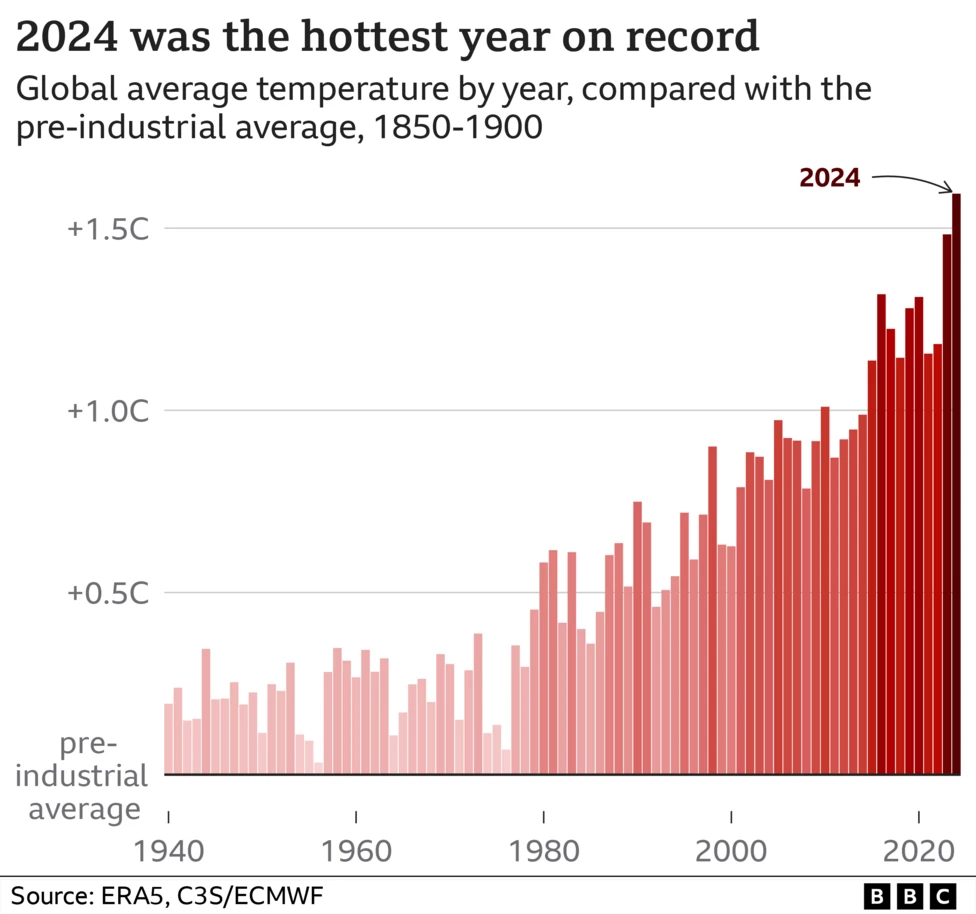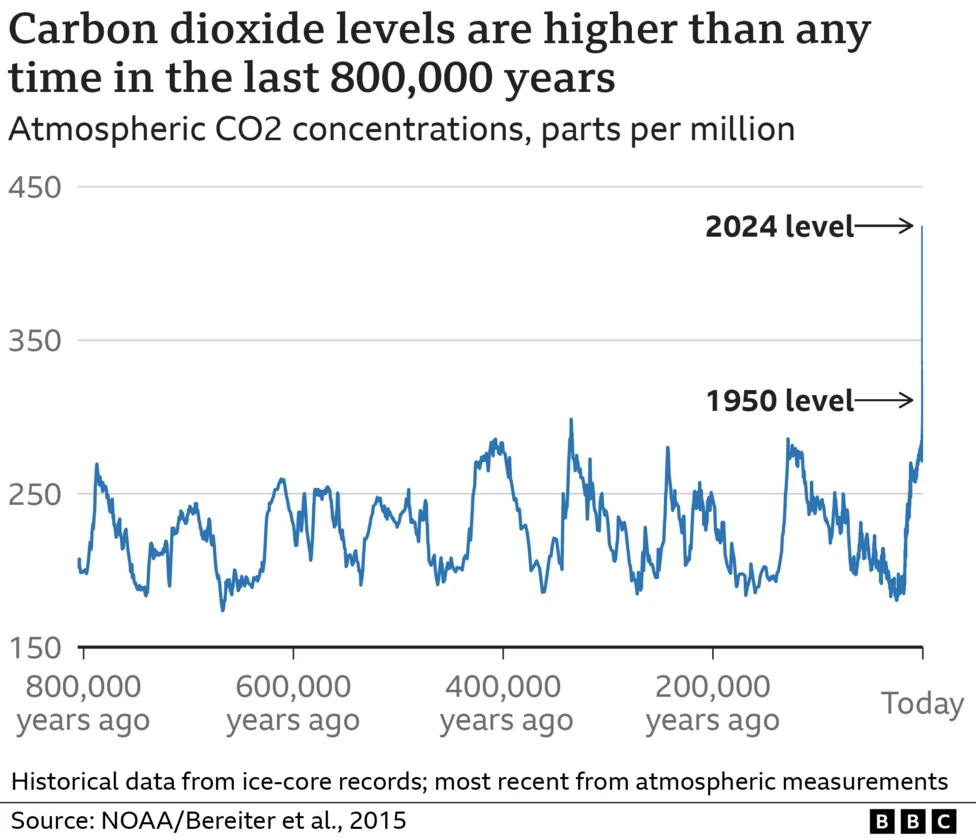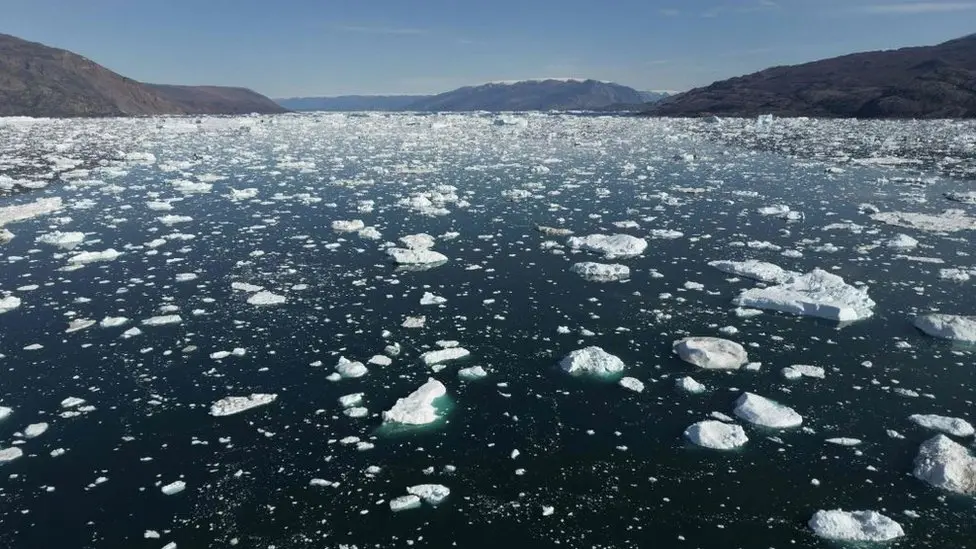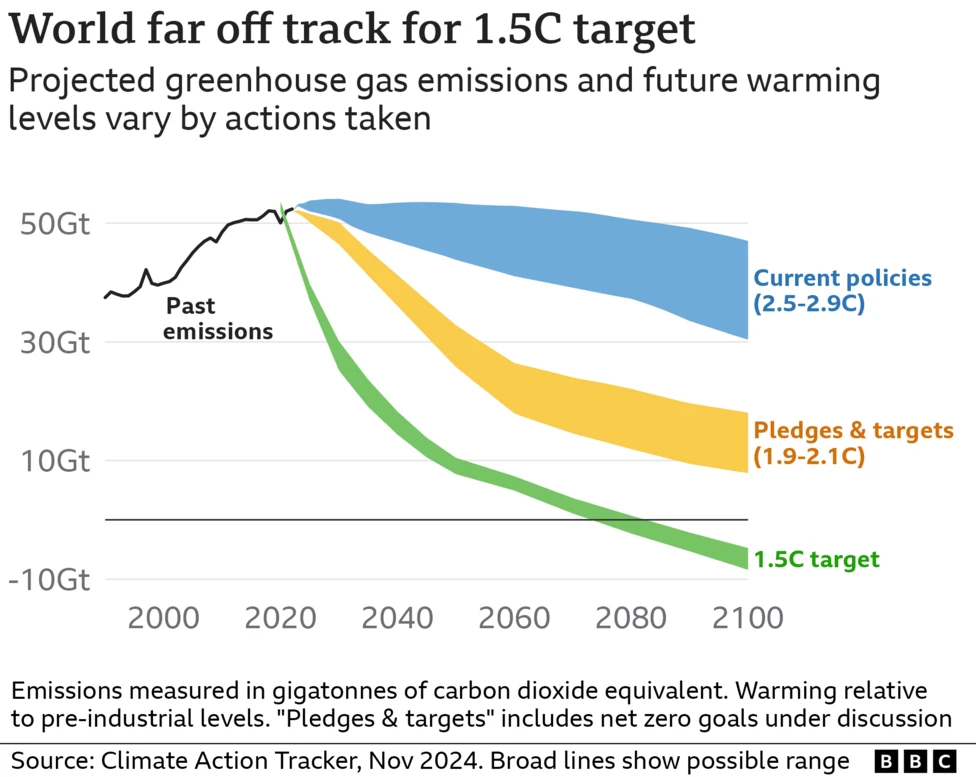Climate change might sound like a complex scientific term, but its impact touches every corner of our daily lives — from the weather we experience to the food we eat.
In simple terms, climate change refers to long-term shifts in temperatures and weather patterns, mainly caused by human activities like burning fossil fuels.
These changes are happening faster than ever before, affecting ecosystems, communities, and economies around the world. But don’t worry — you don’t need a science degree to understand what’s going on.
In this guide, we’ll break it all down in plain English. You’ll learn what climate change really means, what’s causing it, how it affects us, and most importantly, why it matters to everyone on the planet.
Read More: Climate Change Made Easy: What It Is and Why It Matters
What Is Climate Change?
Climate change refers to the long-term alteration of Earth’s average temperatures and weather patterns.
While natural variations have always influenced the planet’s climate, recent decades have seen an unprecedented acceleration—driven largely by human activities such as the burning of fossil fuels and deforestation.
Over the past century, the Earth has experienced a significant and rapid warming trend. According to the European Copernicus Climate Service, the period between 2015 and 2024 saw global temperatures average approximately 1.28°C above those recorded in the late 19th century.
Data from the UK Met Office confirms that every decade since the 1980s has been successively warmer.

Notably, 2024 was the hottest year on record, and for the first time, global temperatures exceeded 1.5°C above pre-industrial levels for an entire calendar year—underscoring the escalating impact of climate change.
How Are Humans Causing Climate Change?
While the Earth’s climate has always undergone natural shifts, the rapid warming observed over the past century cannot be explained by natural factors alone. According to the Intergovernmental Panel on Climate Change (IPCC), this acceleration is overwhelmingly driven by human activity.
The primary culprit is the large-scale use of fossil fuels—coal, oil, and natural gas—across industries, homes, and transportation systems. When burned, these fuels release greenhouse gases, particularly carbon dioxide (CO₂), into the atmosphere.
This CO₂ acts like an insulating blanket, trapping heat near the Earth’s surface and driving global temperatures upward.Since the Industrial Revolution, atmospheric CO₂ levels have increased by approximately 50%, far exceeding natural historical ranges.

Moreover, the chemical signature of this CO₂ clearly traces back to fossil fuel combustion, confirming its human origin.
What Effects of Climate Change Have Already Been Observed?
Climate change is no longer a distant threat — its impacts are already unfolding across the globe, with significant environmental, economic, and human consequences. Key effects include:
- More frequent and intense extreme weather events, such as heatwaves, heavy rainfall, and storms
- Accelerated melting of glaciers and polar ice sheets, contributing to rising sea levels
- Sharp declines in Arctic sea ice, altering ecosystems and global climate patterns
- Warming oceans, which intensify hurricanes and disrupt marine life, including vulnerable coral reefs
These shifts are already exacting a toll on communities and economies. For example, Hurricanes Helene and Milton, which struck the United States in September and October 2024, are each projected to cost at least $50 billion in damages.
Helene alone claimed more than 200 lives, while Milton resulted in at least 16 fatalities.According to scientists at the World Weather Attribution (WWA) group, climate change intensified both storms, increasing their destructive power.
In 2022, East Africa endured its worst drought in four decades, placing over 20 million people at risk of acute hunger. The WWA estimates that such droughts are now at least 100 times more likely due to climate change.
The severity of these impacts depends heavily on the vulnerability and resilience of individual communities, underscoring the urgent need for global adaptation and mitigation strategies.
Why Does 1.5°C Matter — and How Will Future Climate Change Affect the World?
The degree to which the Earth warms has a direct impact on the severity of climate change. Even incremental increases in global temperatures can lead to substantially more devastating consequences.
That’s why limiting long-term warming to 1.5°C above pre-industrial levels is viewed as a critical threshold. In the 2015 Paris Agreement, nearly 200 countries committed to pursue efforts to cap the global temperature rise at this level.
The target refers to a 20-year average rather than a single-year spike, and it serves as a benchmark to help avoid the worst-case scenarios of climate disruption.Scientific projections indicate that warming beyond 1.5°C could drastically amplify climate-related risks.
For instance, extreme heat days at mid-latitudes could become 4°C hotter under 2°C of warming, compared to 3°C if the rise is limited to 1.5°C. Sea-level rise would likely be about 10 centimeters higher, potentially exposing an additional 10 million people to severe flooding.
Coral reefs, already vulnerable, could face near-total extinction—over 99% loss at 2°C, versus 70–90% at 1.5°C. Moreover, twice as many species of plants and vertebrates could face climate conditions beyond their survival range.
The human toll is equally dire: hundreds of millions more people may be at risk of poverty, displacement, and other climate-related dangers by mid-century if global temperatures exceed 1.5°C.The push to stay within the 1.5°C threshold is also aimed at preventing the crossing of so-called “tipping points.”
These are critical thresholds in the climate system, such as the collapse of the Greenland Ice Sheet, which—once triggered—could lead to irreversible and self-reinforcing changes.
While the exact temperature levels at which these points are crossed remain uncertain, scientists warn that the risk increases dramatically with each fraction of a degree.
According to the Intergovernmental Panel on Climate Change (IPCC), between 3.3 and 3.6 billion people are currently highly vulnerable to the impacts of climate change.

Those in developing nations are particularly at risk, not only due to geographical exposure but also because of limited resources to adapt.
This disparity raises urgent ethical and political questions: countries most affected by climate change have historically contributed the least to global greenhouse gas emissions.Furthermore, the consequences of unchecked warming won’t be confined to specific regions.
Crop failures, for instance, could disrupt global food supply chains, triggering worldwide food price increases and social instability. In short, keeping global warming as close to 1.5°C as possible is not just a scientific target—it’s a global imperative to protect ecosystems, economies, and human lives.
What Are Governments Doing to Tackle Climate Change?
In an effort to limit global warming to the 1.5°C threshold set by the Paris Agreement of 2015, the United Nations has emphasized the urgent need to achieve net zero carbon emissions by 2050.
This means drastically cutting greenhouse gas emissions and compensating for any remaining output by removing an equivalent amount of carbon dioxide from the atmosphere through technologies like carbon capture or natural solutions such as reforestation.
Many countries have already set, or are actively considering, net zero targets.
Despite these pledges, global greenhouse gas concentrations continue to rise at an alarming rate, and the Intergovernmental Panel on Climate Change (IPCC) warns that the world is now likely to exceed the 1.5°C threshold, unless far more aggressive action is taken.
That said, tangible progress is being made in some key sectors. The rapid expansion of renewable energy sources, such as solar and wind, along with the accelerated adoption of electric vehicles, marks significant movement toward a lower-emission future.
Global climate diplomacy continues through the annual Conference of the Parties (COP) summits. At COP29 in November 2024, wealthier nations committed to providing at least $300 billion annually by 2035 to help developing countries cope with the effects of climate change and fund adaptation measures.
While this figure is notable, it still falls short of what many low-income nations say is necessary to meet the growing scale of the crisis.

In addition, there was widespread disappointment among several nations and advocacy groups when hoped-for stronger language to accelerate the global transition away from fossil fuels—building on a deal reached in 2023—was not included in the final COP29 agreement.
Despite this, international climate negotiations remain a key platform for holding governments accountable and pushing for stronger action in the face of a rapidly warming world.
What Can Individuals Do About Climate Change?
Individuals play a crucial role in addressing climate change through both personal choices and collective action. By reducing energy consumption—such as using energy-efficient appliances, insulating homes, and switching to renewable electricity—people can significantly lower their carbon footprint.
Opting for sustainable transportation, like walking, cycling, or using public transit, also helps cut greenhouse gas emissions.
Shifting to a more plant-based diet, reducing food waste, and supporting locally sourced products can further lessen environmental impact.
Beyond lifestyle changes, individuals can make a broader difference by advocating for climate policies, supporting eco-conscious businesses, and engaging in community initiatives.
While systemic change is essential, the cumulative effect of individual efforts can drive meaningful progress toward a more sustainable and resilient future.
Frequently Asked Questions (FAQs) About Climate Change
What is climate change?
Climate change refers to long-term changes in the Earth’s temperature and weather patterns. It is primarily driven by human activities, particularly the burning of fossil fuels, which release greenhouse gases that trap heat in the atmosphere.
What are the main causes of climate change?
The main cause of climate change is the increase in greenhouse gases, such as carbon dioxide (CO2), methane (CH4), and nitrous oxide (N2O). These gases are primarily emitted from burning fossil fuels like coal, oil, and gas for energy, transportation, and industrial processes.
How will climate change affect the world?
Climate change is expected to result in more extreme weather events, such as heatwaves, floods, droughts, and storms. It will also contribute to rising sea levels, threaten biodiversity, and disrupt food and water resources, affecting millions of people globally.
What is the significance of limiting global warming to 1.5°C?
Limiting global warming to 1.5°C above pre-industrial levels is crucial to avoid the most catastrophic impacts of climate change. A 1.5°C rise is expected to limit the worst effects, such as severe sea-level rise, extreme heat, and loss of biodiversity, compared to a 2°C increase.
What are governments doing to combat climate change?
Governments around the world are setting emissions reduction targets, with many pledging to achieve net-zero emissions by 2050. They are investing in renewable energy, electric vehicles, and green technologies while negotiating international climate agreements, such as the Paris Agreement.
How can individuals help fight climate change?
Individuals can reduce their carbon footprint by conserving energy, using sustainable transportation, reducing waste, and adopting a plant-based diet. Supporting policies and businesses that prioritize sustainability, as well as educating others, are also key actions individuals can take.
Conclusion
Climate change is one of the most pressing challenges of our time, with far-reaching impacts on the environment, economies, and societies. The evidence is clear: human activities, particularly the burning of fossil fuels, are driving rapid global warming and altering weather patterns. However, it is not too late to make a difference. By reducing emissions, transitioning to renewable energy, and adopting more sustainable lifestyles, we can mitigate the worst effects and work toward a more resilient future.

